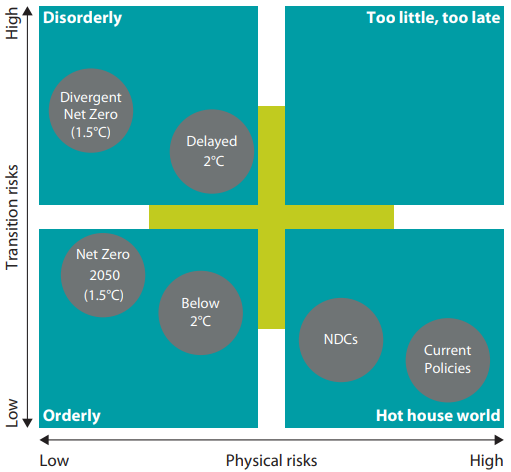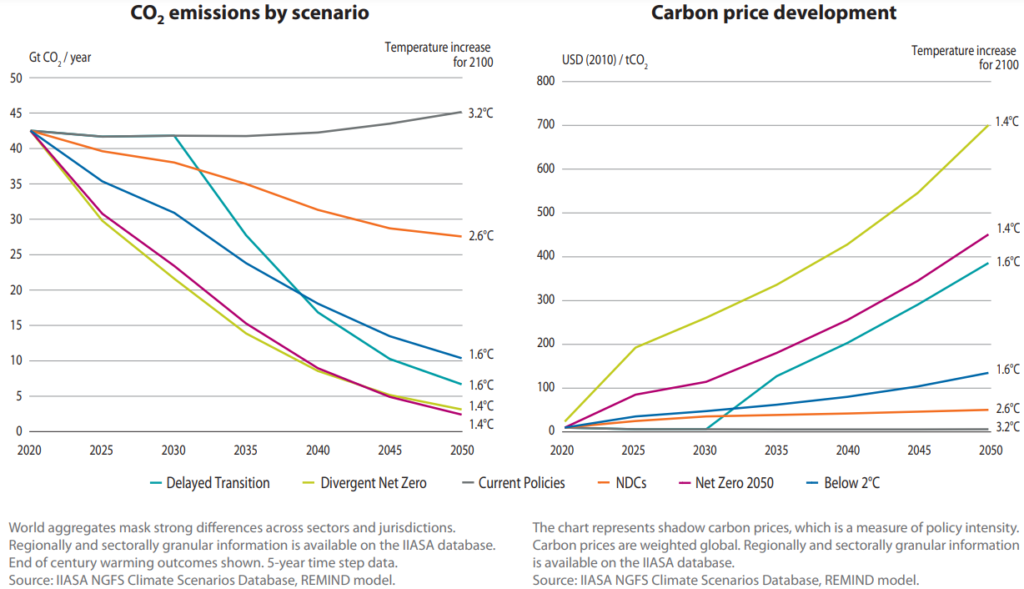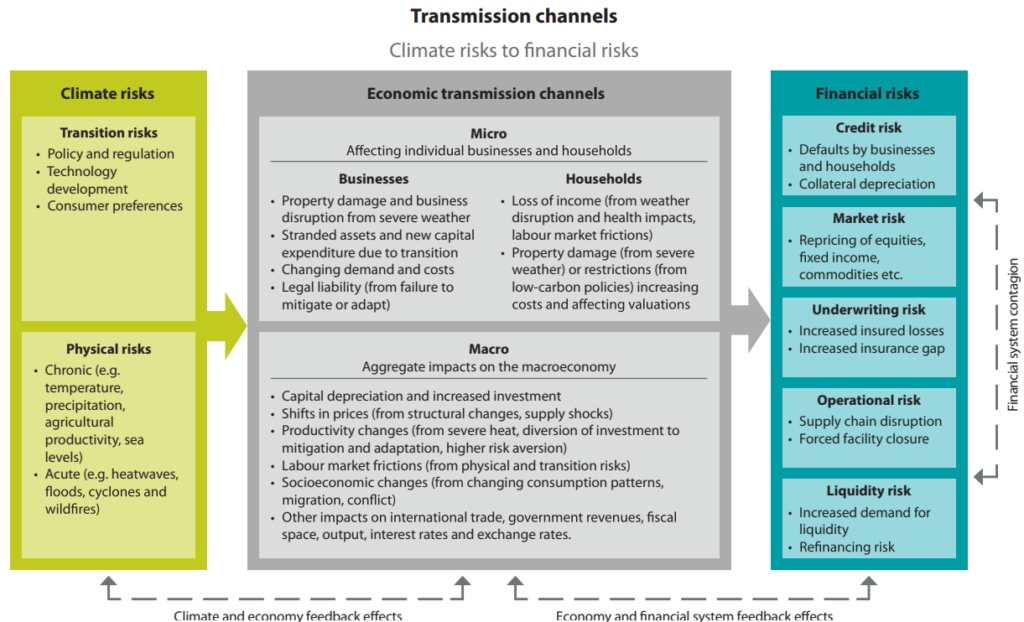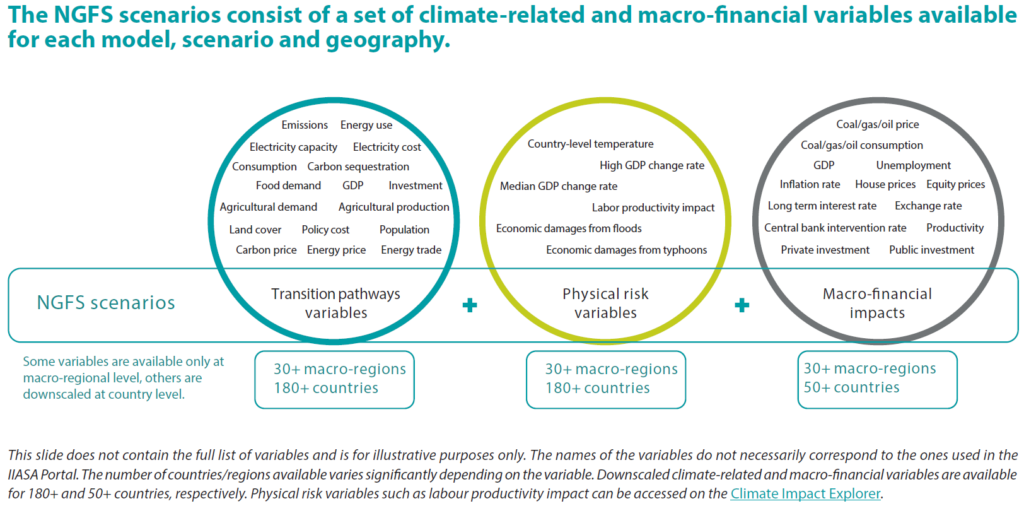NGFS is the Network of Central Banks and Supervisors for Greening the Financial System.
Link to NGFS’s press release of 6 September 2022.
Link to NGFS’s scenarios portal.
Summary
There are six scenarios across three quadrants:

Physical risks come from climate change. Transition risks come from changes in climate policy and technology.
Temperature changes are on the basis of 2050 versus pre-industrial times.
‘NDCs’ are Nationally Determined Contributions which include all pledged policies, even if not yet implemented. ‘Current policies’ are currently implemented policies.
Descriptions
The four quadrants:
- Orderly: climate policies are introduced early and become gradually more stringent.
- Disorderly: policies are delayed or divergent across countries and sectors.
- Hot house world: some climate policies are implemented in some jurisdictions, but global efforts are insufficient to halt significant global warming.
- Too little, too late: a late transition fails to limit physical risks.
The six scenarios:

Overview

Gt = gigatonnes


Changes
The NGFS indicates that the main changes versus its June 2021 version are from the incorporation of:
- Most recent country-level climate commitments made at the COP26 in 2021 (the UN climate change conference in Glasgow);
- Latest GDP and population pathways;
- Projections of the potential losses from extreme weather events (floods and tropical cyclones);
- Specific impacts of chronic climate changes on the macroeconomy.
They do not incorporate the consequences of the war in Ukraine and the subsequent energy crisis.

